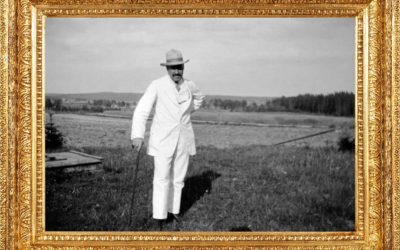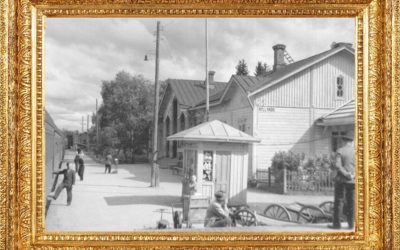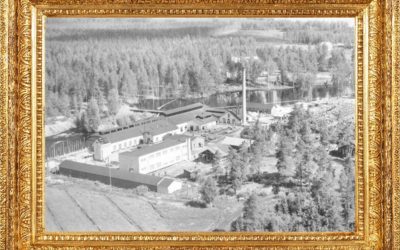According to many who hear these stories, the history of Ähtäri is beyond compare. The question is, how exactly did a small and humble wilderness village grow into a thriving tourist city with a globally established reputation?
To answer this question, we must go back all the way to the 16th century, when many Finnish tribes followed waterways to Ähtäri in search for land for slash-and-burn cultivation. When they found a suitable spot, they settled here to expand their habitat and raise a family.
The actual growth story of the town started in 1883 when the railway crossing the area was completed. The railway was known as the Nicholas Railroad from Vaasa to Tampere. The railway boosted local industrialisation. Thanks to the efforts of the ironworks owners August and Lydia Keirkner, the Inha ironworks became the centre for a wealthy industrial village, visited by many Golden Era artists and other national dignitaries.
The waterways and railway allowed for the birth of several other sawmills and industrial plants, as well. Even the Finnish Defence Forces built a depot in Ähtäri in 1940 due to the good connections.
It can be said that tourism in Ähtäri started in the 19th century, when several Finnish artists from Sibelius to Järnefelt spent their summers on the shores of the local lakes, learning Finnish in the process. This early version of tourism and passenger traffic was made possible – of course – by the railway connection.
A real upswing in the local tourism began in 1973, when Finland’s first natural animal park opened its gates and the relentless dream of Väinö Jaakola, who was the mayor of Ähtäri at the time, became a reality. Since then, the zoo and its surroundings have become an international tourist attraction where the most famous stars are obviously the two giant pandas, Lumi and Pyry.
Read the stories behind the paintings!
Hugo Simberg spent his last summer in Sarkola, Peränne, where he died in July 1917. The place still features the stairs along which the artist was carried on his final journey. It is said that he painted his last work, “Slash-burning Smoke” (Kaskisavua), in Peränne. In this photograph, Simberg stands on the Sarkola grounds. A memorial and information board have been placed on the site of Simberg’s death.
The Myllymäki railway station was the only third-class station with a restaurant along the Tampere–Vaasa railroad that was opened for traffic in 1883. The elegant railroad cars of the Russian empress Feodorovna were kept at the Myllymäki station. The Danish-born princess travelled from Saint Petersburg to Denmark via the Nicholas Railroad.
After Tampere, the Inha ironwork mills were the second place to get electrical lighting in the 19th century.




